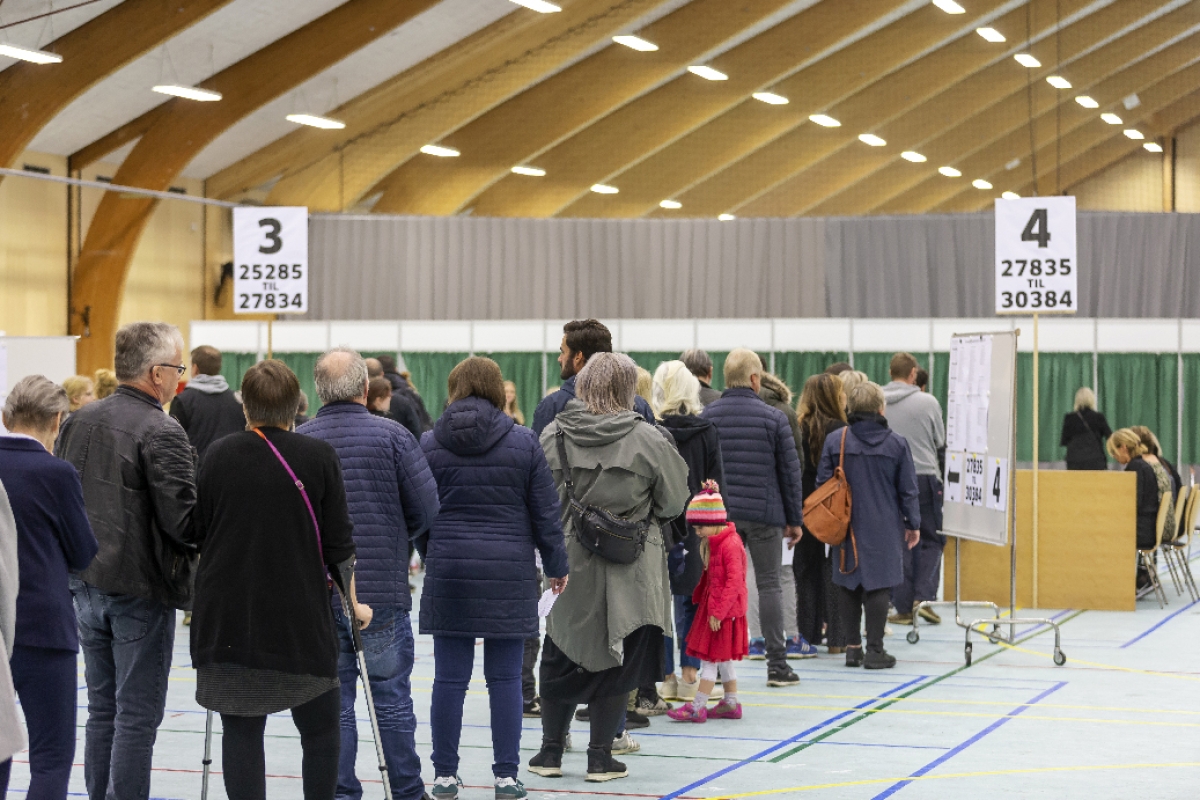Population
11. Nov 2024
Population was 54,668 on 1 October— up 0.6% year-on-year

Although the Faroese population continues to grow, the growth is slowing down. The annual increase of 309 people is only two-thirds of the growth registered in the previous 12-month period. This change is equally attributable to the excess of births over deaths and to net migration.
[px-graph-1]
The population trend is determined by net migration, i.e. the difference between the number of immigrants and the number of emigrants, and the excess of live births over deaths. The population growth in the past year was driven by an excess of births of 128 people and a net migration figure of 181 people.
The population growth in the past 12 months was slower than in the previous period. The difference of 148 people is evenly split between an excess of births and net migration. The excess of births declined due to a lower birth rate. Net migration went down because although fewer people left the country, even fewer moved to the country. See more figures in the table below.
Fewer births
The graph below shows the monthly trends for births and deaths. The steadily declining trend for births continues, while the death rate trend remains stable.
[px-graph-2]
Less migration
The trends in the graph below show that migration is on a decline. Immigration has declined slightly more than emigration, resulting in lower net migration.
[px-graph-3]
Highest growth in the largest municipalities
Out of the 29 municipalities, Tórshavn, Runavík, Nes, Vágar municipalities had the highest population growth from 1 October 2023 to 1 October 2024. The towns and villages with the highest population growth were Tórshavn, Argir, Hoyvík and Toftir. The municipalities with the greatest population decline were Eiði, Sunda, Vágur and Fuglafjørður, each with a population decline of 30 people in the past year.
The table below shows the population across the 29 municipalities, with details for each town and village on 1 October 2023 and 1 October 2024. More details about individual towns and villages are available here.
[px-graph-6]
Population figures have a one-month lag
The figures have a one-month lag due to delays in registrations, especially regarding address changes, where many registrations are made after the month of address change has ended. To accommodate as many corrections as possible, there is a one-month lag in the data.
About the population figures
The population is defined as all individuals registered in the national register as residents of the Faroe Islands. Population data includes date of birth, gender, place of birth, citizenship, relationship status, and, where applicable, information on immigration and emigration, domestically as well as between the Faroe Islands and other nations.
About the trend
The trend describes the population trend by adjusting for seasonal effects and other error components in the population figure.